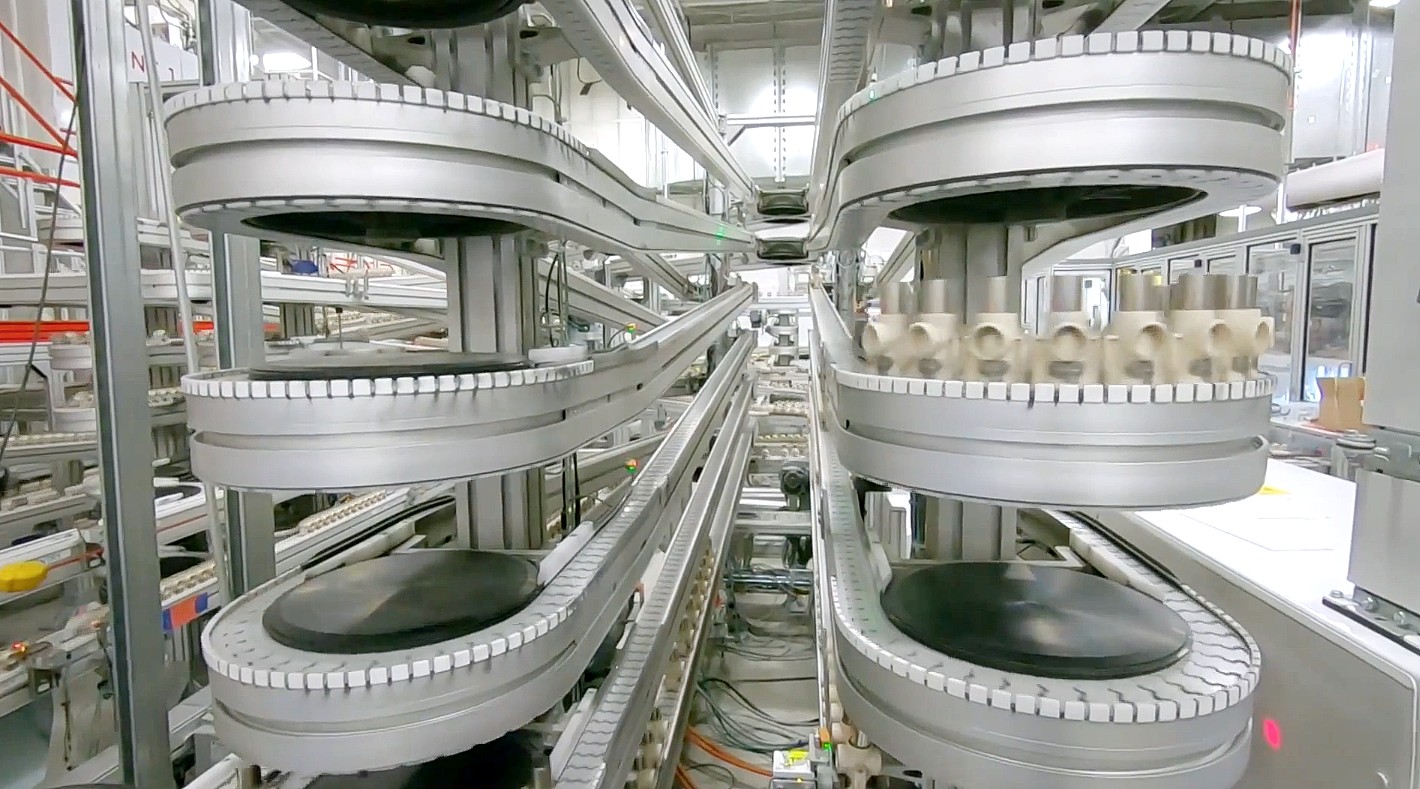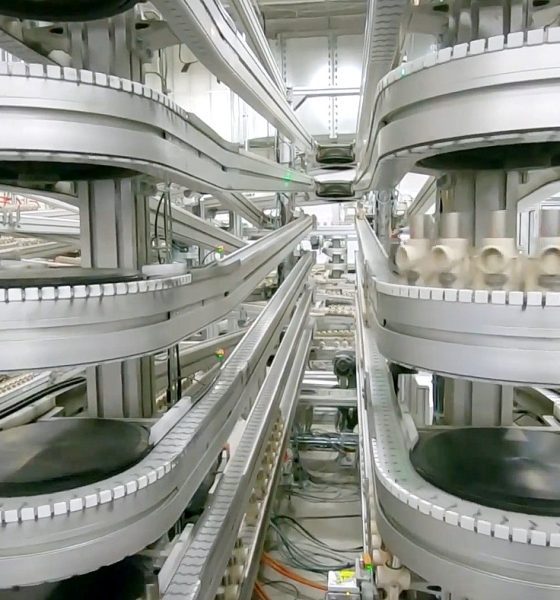

News
Tesla battery supplier LG Chem to double production capacity: report
Tesla battery supplier LG Chem will double its cell production capacity over the next year to keep up with the growing demand for Tesla’s electric vehicles in China, a new report says.
An exclusive report from Reuters states that sources familiar with the matter have talked about strategies moving forward to keep up with increasingly popular all-electric vehicles from Tesla. LG Chem, who supplies cells to Tesla in Shanghai for the production of the Model 3 sedan, stated that it would also ship its increased output from China and Korea to Tesla production facilities in the United States and Germany once they are completed. Tesla currently has a new production facility under construction in Austin, Texas, and in Brandenburg, Germany. Reuters indicated that two people who are familiar with the matter have seen LG Chem signal an increased role in the supply chain of Tesla as it continues to grow its lead in the EV production sector.
Tesla is LG Chem’s primary customer, and the plan to double its cell production capacity comes as Tesla begins to expand its global production processes aggressively. Tesla has been manufacturing vehicles in Shanghai for around a year and announced its intentions to build a European production facility around 13 months ago. Rumors also speculate that another factory could be on the way within the next few years, and India could be the location, but nothing has been confirmed.
LG Chem to double China battery capacity to meet Tesla demand | Reuters $TSLA
— David Tayar (@davidtayar5) December 1, 2020
LG Chem has already added additional production lines to increase the possible production capacity in South Korea this year. The main purpose of the expansion was to meet demand from Tesla’s U.S. plants, the two sources told Reuters. “Tesla simply doesn’t have enough battery cells, so LG Chem is going to more than double China outputs,” the person said.
Tesla sources batteries from Panasonic, LG Chem, and CATL, and CEO Elon Musk stated at the company’s Battery Day event in September that it plans to begin making its own 4680 cells that will be less expensive and more efficient. However, the company will continue to source batteries from suppliers for the time being, but could eventually become a battery supplier on its own as it has plans to open several battery cell production facilities across the globe.
Tesla China signs contract with LG Chem for Model Y production
To keep up with global demand, Tesla will have to source batteries from third-party sources for the time being, and an LG Chem spokesperson said that there is an increased demand for cells. However, he could not elaborate on who was the cause of the expansion in cell production capacity.
“We’re continuing to expand capacity for cylindrical battery cells in response to growing demand from automakers, but we can’t comment on specific customers,” an LG Chem spokesman told Reuters.
LG Chem plans to invest $500 million over the next year to raise the annual production of 2170 cells by 8 GWh. The 2170 cells are used in the Model 3 and Model Y, Tesla’s two mass-market vehicles. Currently, eight production lines are operational at the Nanjing, China plant that LG Chem manufactures its batteries, but it plans to expand its available lines to seventeen.
Tesla currently only manufactures the Model 3 at its Chinese production facility, but it plans to begin building the Model Y within the next few months. Because of the overwhelming demand for both the Model 3 and Model Y, the move to expand 2170 cell capacity is a no-brainer, especially considering the Government-offered subsidies that China provides for clean energy vehicles.
The person who spoke with Reuters also indicated that LG Chem’s Chinese factory would initially supply battery cells for Tesla’s Giga Berlin production facility in Germany when it begins production in Summer 2021.

News
Tesla aims to combat common Full Self-Driving problem with new patent
Tesla writes in the patent that its autonomous and semi-autonomous vehicles are heavily reliant on camera systems to navigate and interact with their environment.

Tesla is aiming to combat a common Full Self-Driving problem with a new patent.
One issue with Tesla’s vision-based approach is that sunlight glare can become a troublesome element of everyday travel. Full Self-Driving is certainly an amazing technology, but there are still things Tesla is aiming to figure out with its development.
Unfortunately, it is extremely difficult to get around this issue, and even humans need ways to combat it when they’re driving, as we commonly use sunglasses or sun visors to give us better visibility.
Cameras obviously do not have these ways to fight sunglare, but a new patent Tesla recently had published aims to fight this through a “glare shield.”
Tesla writes in the patent that its autonomous and semi-autonomous vehicles are heavily reliant on camera systems to navigate and interact with their environment.

The ability to see surroundings is crucial for accurate performance, and glare is one element of interference that has yet to be confronted.
Tesla described the patent, which will utilize “a textured surface composed of an array of micro-cones, or cone-shaped formations, which serve to scatter incident light in various directions, thereby reducing glare and improving camera vision.”

The patent was first spotted by Not a Tesla App.
The design of the micro-cones is the first element of the puzzle to fight the excess glare. The patent says they are “optimized in size, angle, and orientation to minimize Total Hemispherical Reflectance (THR) and reflection penalty, enhancing the camera’s ability to accurately interpret visual data.”
Additionally, there is an electromechanical system for dynamic orientation adjustment, which will allow the micro-cones to move based on the angle of external light sources.
This is not the only thing Tesla is mulling to resolve issues with sunlight glare, as it has also worked on two other ways to combat the problem. One thing the company has discussed is a direct photon count.
CEO Elon Musk said during the Q2 Earnings Call:
“We use an approach which is direct photon count. When you see a processed image, so the image that goes from the sort of photon counter — the silicon photon counter — that then goes through a digital signal processor or image signal processor, that’s normally what happens. And then the image that you see looks all washed out, because if you point the camera at the sun, the post-processing of the photon counting washes things out.”
Future Hardware iterations, like Hardware 5 and Hardware 6, could also integrate better solutions for the sunglare issue, such as neutral density filters or heated lenses, aiming to solve glare more effectively.
Elon Musk
Delaware Supreme Court reinstates Elon Musk’s 2018 Tesla CEO pay package
The unanimous decision criticized the prior total rescission as “improper and inequitable,” arguing that it left Musk uncompensated for six years of transformative leadership at Tesla.

The Delaware Supreme Court has overturned a lower court ruling, reinstating Elon Musk’s 2018 compensation package originally valued at $56 billion but now worth approximately $139 billion due to Tesla’s soaring stock price.
The unanimous decision criticized the prior total rescission as “improper and inequitable,” arguing that it left Musk uncompensated for six years of transformative leadership at Tesla. Musk quickly celebrated the outcome on X, stating that he felt “vindicated.” He also shared his gratitude to TSLA shareholders.
Delaware Supreme Court makes a decision
In a 49-page ruling Friday, the Delaware Supreme Court reversed Chancellor Kathaleen McCormick’s 2024 decision that voided the 2018 package over alleged board conflicts and inadequate shareholder disclosures. The high court acknowledged varying views on liability but agreed rescission was excessive, stating it “leaves Musk uncompensated for his time and efforts over a period of six years.”
The 2018 plan granted Musk options on about 304 million shares upon hitting aggressive milestones, all of which were achieved ahead of time. Shareholders overwhelmingly approved it initially in 2018 and ratified it once again in 2024 after the Delaware lower court struck it down. The case against Musk’s 2018 pay package was filed by plaintiff Richard Tornetta, who held just nine shares when the compensation plan was approved.
A hard-fought victory
As noted in a Reuters report, Tesla’s win avoids a potential $26 billion earnings hit from replacing the award at current prices. Tesla, now Texas-incorporated, had hedged with interim plans, including a November 2025 shareholder-approved package potentially worth $878 billion tied to Robotaxi and Optimus goals and other extremely aggressive operational milestones.
The saga surrounding Elon Musk’s 2018 pay package ultimately damaged Delaware’s corporate appeal, prompting a number of high-profile firms, such as Dropbox, Roblox, Trade Desk, and Coinbase, to follow Tesla’s exodus out of the state. What added more fuel to the issue was the fact that Tornetta’s legal team, following the lower court’s 2024 decision, demanded a fee request of more than $5.1 billion worth of TSLA stock, which was equal to an hourly rate of over $200,000.
Delaware Supreme Court Elon Musk 2018 Pay Package by Simon Alvarez
News
Tesla Cybercab tests are going on overdrive with production-ready units
Tesla is ramping its real-world tests of the Cybercab, with multiple sightings of the vehicle being reported across social media this week.

Tesla is ramping its real-world tests of the Cybercab, with multiple sightings of the autonomous two-seater being reported across social media this week. Based on videos of the vehicle that have been shared online, it appears that Cybercab tests are underway across multiple states.
Recent Cybercab sightings
Reports of Cybercab tests have ramped this week, with a vehicle that looked like a production-ready prototype being spotted at Apple’s Visitor Center in California. The vehicle in this sighting was interesting as it was equipped with a steering wheel. The vehicle also featured some changes to the design of its brake lights.
The Cybercab was also filmed testing at the Fremont factory’s test track, which also seemed to involve a vehicle that looked production-ready. This also seemed to be the case for a Cybercab that was spotted in Austin, Texas, which happened to be undergoing real-world tests. Overall, these sightings suggest that Cybercab testing is fully underway, and the vehicle is really moving towards production.
Production design all but finalized?
Recently, a near-production-ready Cybercab was showcased at Tesla’s Santana Row showroom in San Jose. The vehicle was equipped with frameless windows, dual windshield wipers, powered butterfly door struts, an extended front splitter, an updated lightbar, new wheel covers, and a license plate bracket. Interior updates include redesigned dash/door panels, refined seats with center cupholders, updated carpet, and what appeared to be improved legroom.
There seems to be a pretty good chance that the Cybercab’s design has been all but finalized, at least considering Elon Musk’s comments at the 2025 Annual Shareholder Meeting. During the event, Musk confirmed that the vehicle will enter production around April 2026, and its production targets will be quite ambitious.








